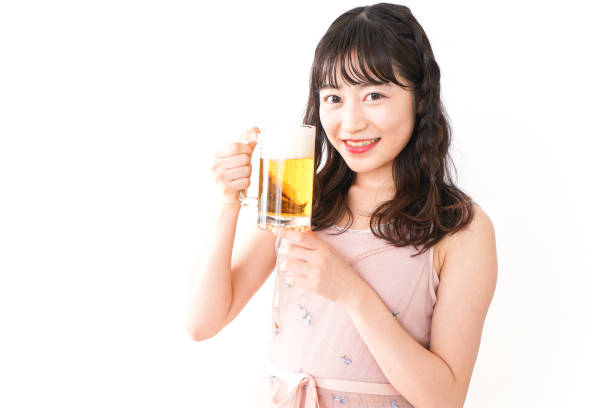China, with its rich cultural heritage and diverse culinary landscape, offers an array of alcoholic beverages that reflect its history and regional variations. From ancient brewing techniques to modern innovations, Chinese alcoholic drinks are an integral part of social gatherings, celebrations, and traditional rituals. However, as the popularity of these beverages grows, so does the need for awareness around issues such as alcohol rehabilitation treatment. These wonderful drinks should be enjoyed responsibly and occasionally.
The earliest evidence of alcohol production in China dates back to around 7000 BCE. Archaeological findings from the Neolithic site of Mijiaya in Shaanxi province indicate that ancient Chinese people were brewing a fermented beverage made from rice, honey, and fruit. This makes China one of the oldest known regions for alcohol production in the world, showcasing a long history of brewing and fermentation that has influenced its rich cultural heritage surrounding alcoholic beverages.
This article explores some of the best alcoholic drinks from China, delving into their unique characteristics and cultural significance.
1. Baijiu: The National Spirit
Baijiu, often referred to as the national spirit of China, is a potent distilled liquor made primarily from sorghum, although other grains such as wheat, barley, and rice can also be used. With an alcohol content typically ranging from 40% to 60%, baijiu is known for its strong flavour and aroma, which can vary greatly depending on the production region and fermentation methods.
There are several different styles of baijiu, including Sichuan, Shandong, and Jiangsu, each with its distinct characteristics. The most famous brand, Moutai, hails from Guizhou province and is often served at banquets and celebrations. Baijiu is traditionally consumed neat, and its strong flavour is often complemented by accompanying dishes, making it a staple in Chinese dining culture.
2. Huangjiu: The Yellow Wine
Huangjiu, or yellow wine, is a traditional Chinese fermented alcoholic beverage made from rice, millet, or other grains. It has a lower alcohol content than baijiu, typically ranging from 10% to 20%, and is known for its sweet and complex flavours. Huangjiu has been produced for over 2,500 years and is often enjoyed warm or at room temperature.
This drink is particularly popular in southern China, especially in regions like Zhejiang and Jiangsu. It is often paired with food, enhancing the dining experience. One of the most renowned varieties of huangjiu is Shaoxing wine, named after the city of Shaoxing in Zhejiang province, which is famous for its rich, amber colour and aromatic profile.
3. Mijiu: The Rice Wine
Mijiu is a traditional Chinese rice wine that is made by fermenting glutinous rice. It has a slightly sweet taste and a lower alcohol content, typically around 15% to 20%. Mijiu is often used in cooking, particularly in dishes that require a splash of sweetness and depth of flavour.
In addition to its culinary uses, mijiu is enjoyed as a beverage, particularly in rural areas where it is often homemade. It is typically served warm and can be accompanied by savoury snacks, making it a comforting drink during colder months.
4. Fruit Wines: A Diverse Selection
China is also known for its diverse range of fruit wines, which are made from various fruits such as grapes, peaches, and plums. These wines are often sweeter than traditional grape wines and can have an alcohol content ranging from 8% to 15%.
Lychee wine and plum wine are particularly popular, offering refreshing and fruity alternatives to stronger spirits. These wines are often enjoyed chilled and are perfect for summer gatherings or as a light aperitif.
5. Craft Beers: A Modern Twist
In recent years, the craft beer movement has gained momentum in China, with many breweries popping up across the country. Chinese craft beers often incorporate traditional ingredients and flavours, such as jasmine, chrysanthemum, and even baijiu, creating unique brews that reflect the local culture.
Cities like Beijing, Shanghai, and Chengdu have become hubs for craft beer enthusiasts, offering a wide variety of styles, from IPAs to stouts. This modern twist on alcoholic beverages has introduced a new generation to the joys of beer tasting and brewing.
China’s alcoholic drinks offer a fascinating glimpse into the country’s rich cultural heritage and culinary traditions. From the potent baijiu to the sweet huangjiu and the refreshing fruit wines, each beverage has its unique story and significance. As the popularity of these drinks continues to grow, it is essential to be mindful of the potential for alcohol-related issues and those who may struggle with addiction.
Whether enjoyed during festive celebrations or quiet evenings at home, Chinese alcoholic beverages provide a delightful way to connect with culture and history. As with all alcoholic drinks, moderation is key, allowing individuals to savour the flavours and traditions without compromising their well-being.

